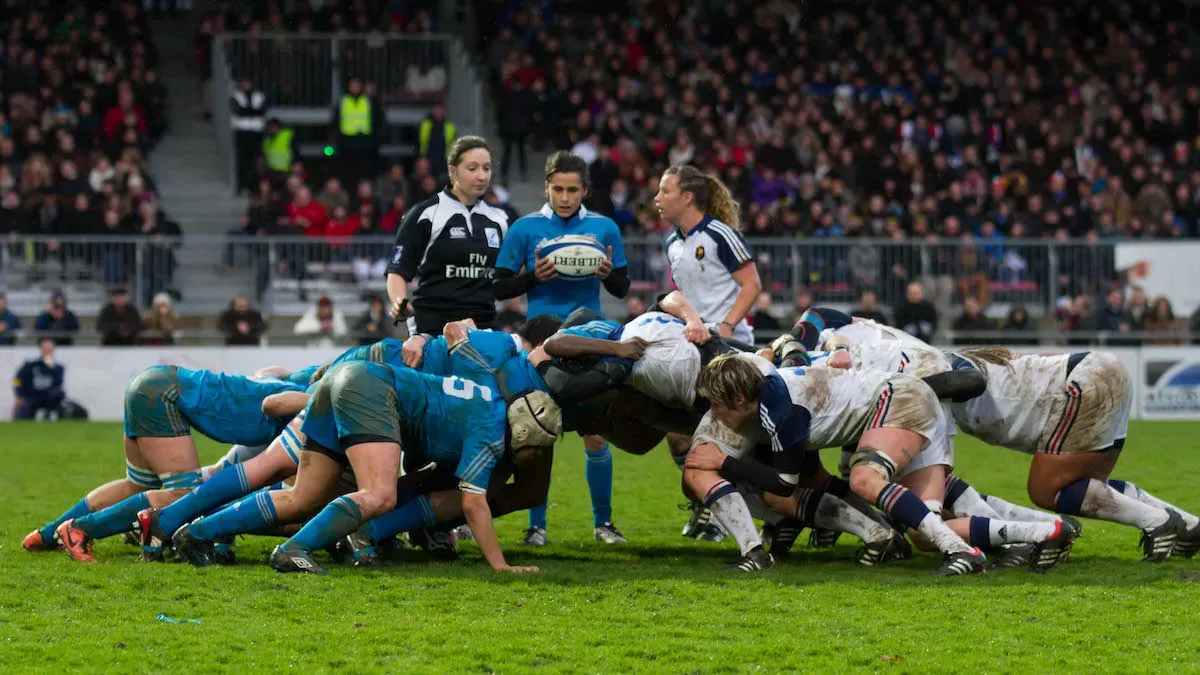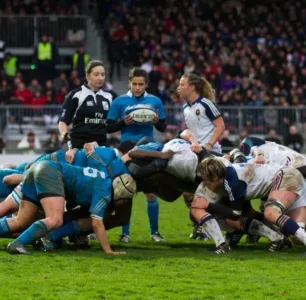Discover the dynamic world of rugby props and their indispensable contributions to the game.
Rugby, known for its physicality, speed, and strategic gameplay, relies on a diverse range of players to execute successful plays and secure victories. Among these key positions, the prop stands out as a powerhouse and a linchpin of the team. In this article, we delve into the crucial role of the prop in rugby, highlighting their immense contributions and the skills that make them integral to the game’s success.
1. The Power and Strength of the Prop
At the forefront of the scrum, the prop occupies a vital position on the rugby field. Prop players are typically found in the front row, alongside the hooker and another prop, forming what is known as the “front row union.” These athletes possess exceptional physical strength, endurance, and raw power, making them the primary force behind the scrum.
Mastering the Art of the Scrum
The scrum, a fundamental aspect of rugby, is a method of restarting play after a minor infringement. It involves eight players from each team binding together, engaging in a forceful contest for the ball. The prop’s role within the scrum is critical, as they provide stability, strength, and power to drive the opposition backward and secure possession.
The Importance of Technique and Body Positioning
While strength is paramount, technique and body positioning play an equally significant role for a prop player. A prop must employ proper body mechanics, such as engaging the core, driving with the legs, and maintaining a low stance, to maximize their impact during the scrum. A well-executed technique ensures the prop can exert maximum force against their opponent, aiding their team’s chances of success.
Dynamic Contributions in Open Play
Beyond their essential role in the scrum, props are also actively involved in open play. Their size and strength allow them to make significant contributions in areas such as ball carrying, tackling, and rucking. These players often serve as the first line of defense, using their physicality to halt opponents’ progress and create turnovers for their team.
The Art of Ball Carrying
One of the prop’s primary tasks is ball carrying, which involves gaining ground and breaching the opposition’s defensive line. With their powerful physique, props can be formidable runners, challenging defenders to stop their momentum. Additionally, their ability to offload the ball during contact, known as an “offload,” can create valuable attacking opportunities for their teammates.
Defensive Prowess and Tackling Technique
In rugby, tackling is a fundamental defensive skill, and props are often at the forefront of this crucial aspect of the game. Their strength and size make them formidable tacklers, capable of bringing down even the most elusive opponents. The prop’s tackle technique, including proper body position, timing, and wrapping the arms securely, allows them to neutralize threats and regain possession for their team.
Mastery of the Ruck
The ruck is a contest for the ball that occurs when a player is tackled and brought to the ground. In this phase, props are instrumental in securing possession for their team. By clearing out opposing players from the ruck and creating a secure platform, props enable their teammates to retrieve the ball swiftly and continue the attack. Their physical presence and tenacity significantly influence the outcome of these crucial exchanges.
The Importance of Teamwork and Communication
As with any team sport, effective communication and teamwork are paramount in rugby. Props must work seamlessly withtheir fellow forwards and the entire team to execute cohesive plays and strategies. They communicate with their teammates during scrums, lineouts, and open play, ensuring everyone is synchronized and aware of their roles and responsibilities. A prop’s ability to work in harmony with their teammates enhances the overall performance and effectiveness of the team as a whole.
Adaptability and Versatility
While props excel in their primary roles, they also possess adaptability and versatility that allows them to contribute in various situations. In addition to their scrummaging prowess, props often participate in lineouts, where they can use their height and strength to secure possession for their team. Their agility and mobility make them valuable in loose play as well, as they can support teammates in rucks, compete for turnovers, and provide crucial support in defense or attack.
Leadership and Experience
Props, particularly those with years of experience, often assume leadership roles within the team. Their knowledge of the game, understanding of tactics, and ability to read the field make them valuable assets for their teammates. They provide guidance, encouragement, and strategic input, helping to shape the team’s overall performance and decision-making during intense matches.
The Evolving Role of the Prop
Over the years, the role of the prop in rugby has evolved. While their physicality and power remain crucial, modern props are also expected to possess other skills, such as mobility, ball-handling abilities, and an understanding of the game’s tactical nuances. As the sport continues to progress, props must adapt to the changing demands, ensuring they remain integral to their team’s success.
The Unsung Heroes of Rugby
Despite their significant contributions to the game, props often operate under the radar, with their efforts and achievements sometimes overlooked by casual spectators. However, within the rugby community, their value and importance are recognized and celebrated. Coaches, teammates, and fans understand the immense role that props play in shaping the outcome of matches and acknowledge their contributions as the unsung heroes of the sport.
In conclusion, the prop holds a crucial and multifaceted role in rugby. Their power, technique, and physicality are essential in the scrum, while their skills and versatility extend to open play. With their ability to dominate in ball carrying, tackling, and rucking, props significantly impact the outcome of matches. Their leadership, adaptability, and teamwork further enhance their value to the team. As the game evolves, props continue to adapt and redefine their role, ensuring they remain indispensable components of rugby’s success. So, the next time you watch a rugby match, take a moment to appreciate the relentless efforts and dynamic performances of the prop, the powerhouse player who serves as the backbone of the team.

